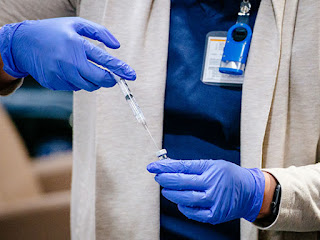Localization of vaccination services: qualitative insights into public health and minority groups working together to encode coronavirus vaccines
Minority and religious minorities
are imbalanced in the effects of the SARSCoV2 pandemic and are less likely to
accept coronavirus vaccination. In the orthodox Jewish quarter of the United
Kingdom, the incidence of SARSCoV2 and measles increased from 2020 to 21 due to
the non-optimal range of childhood immunization (2018-19). The purpose of our
study was to find out how the Corona Virus Vaccination Program (CVP) works
between public health services and orthodox Jewish medical institutions. The
method included public health professionals, local community happiness and
religious representatives, and 28 semi-shot interviews actually conducted by a
religious representative and budget member. We examined CVP delivery from the
perspective of people involved in the organization of service and vaccine's
beneficiary. Interview data has been incorporated within the CVP's circulation
of the Orthodian Jewish pressure and social media CVP. Analysis by theme is Prior to immunization with public health services, the role of coronavirus
vaccination and date diffusions for Jewish health institutions, dates
dissemination, and vaccine management. Vaccine Recording Local
approach to promote minority vaccination with historically optimal compensation levels. Coding promotion,
minority of participants is worried about safety. Provide problems and concerns
of CVP information and stakeholder response (context-specific). Based on this
CVP-Colivery example, we propose that a localized approach to the delivery of
immunization programs can fill service delivery gaps in a way that involves
trusted community organizations. Localization of immunization services may
include communication or implementation strategies, but both approaches should
consider investments, commitments, and adjustments that are not cost-neutral.
Finding immune services in collaboration with welfare groups opens up
opportunities for ongoing CVPs and other immune programs and provides
opportunities for ethnic and religious minorities to work together to protect
the health of the community.



Comments
Post a Comment